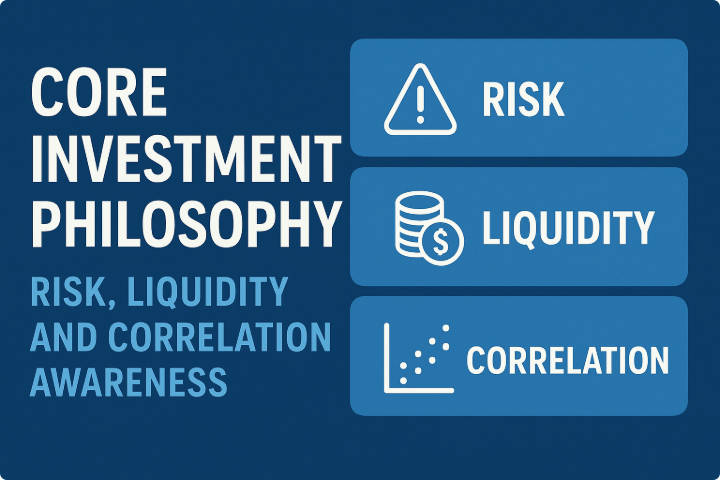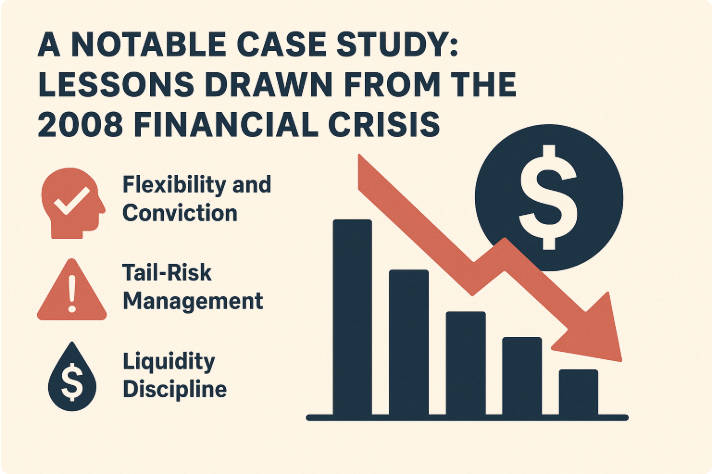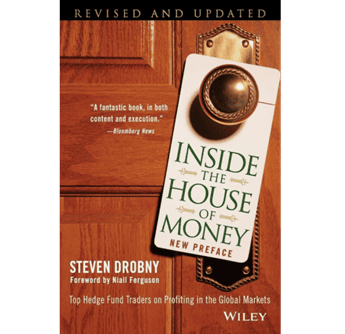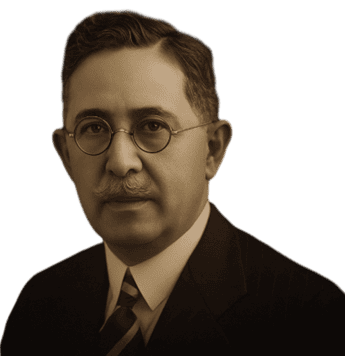
Steven Drobny is a hedge fund adviser and author who has become a leading translator of hedge fund practice for institutional investors. From trading desks to founding Clocktower Group, he has spent his career interrogating how top macro managers generate returns and manage risk.
This article explains his background, trading and research experience, core investment philosophy, and notable achievements.
Who Steven Drobny Is and Why He Matters in Modern Finance
Steven Edward Drobny is an American hedge fund adviser, founder and chief executive of Clocktower Group, and the author of two widely read books on global macro trading. His work has helped institutional allocators better understand discretionary macro and commodity strategies, and his interviews with leading managers are treated as primary-source evidence on how top traders think and act.
Steven Drobny's Early Career and Professional Background

Drobny began his professional career in market-facing roles, including positions within Deutsche Bank's hedge fund group and at AIG Trading, where he gained direct exposure to metals and energy markets.
After building operational and market experience, he founded Drobny Global Advisors and later Clocktower Group, positioning himself as a conduit between discretionary macro fund managers and institutional investors such as pensions, endowments and family offices.
These experiences informed both his advisory business model and the interviews that became his books.
Evolution of a Macro Thinker: Trading, Research and the Interview Method
Drobny's distinctive contribution to the literature on macro investing is methodological. He combines first-hand market experience with structured interviews of successful managers.
That approach surfaces repeatable practices rather than abstract theory. His interview work led to two major books that collate manager anecdotes, playbooks and risk frameworks, enabling readers to compare divergent approaches within the global macro universe. The comparative, interview-based methodology turns otherwise opaque hedge fund practice into teachable insight.
Core Investment Philosophy: Risk, Liquidity and Correlation Awareness

Steven Drobny's central thesis is that risk management must come before return generation. He repeatedly emphasises three interrelated themes:
Risk First: Replace raw return targets with risk-adjusted objectives and design positions to limit downside exposure.
Liquidity as Insurance: Treat cash and liquidity as structural protections that preserve optionality during market stress.
Diversify by Correlation: Build portfolios around uncorrelated risk factors rather than by conventional asset class buckets.
These themes recur across his interviews and analyses and reflect a practical orientation toward surviving market dislocations while capturing macro opportunity. His work was particularly influential after the 2008 crisis, when many institutional allocators rethought conventional diversification and liquidity assumptions.
Major Achievements and Industry Contributions
The table below summarises Drobny's principal published works and business milestones.
| Year / Milestone |
Description |
| 2006 |
Publication of Inside the House of Money: Top Hedge Fund Traders on Profiting in the Global Markets, a collection of interviews with leading global macro managers. |
| 2010 |
Publication of The Invisible Hands: Top Hedge Funds on Bubbles, Crashes and Real Money, analysing how managers adapt to extreme events and institutional constraints. |
| 2007–present |
Founding and leadership of Clocktower Group, an advisory and asset management firm focused on connecting macro managers with institutional capital. |
Beyond publishing, Drobny has served as a visible moderator and interviewer at industry events, and he has provided advisory services to pensions, endowments and family offices seeking disciplined macro exposure.
His books and advisory work together raised institutional awareness of manager selection, tail-risk control and liquidity management.
A Notable Case Study: Lessons Drawn from the 2008 Financial Crisis

In The Invisible Hands, Drobny profiles managers who navigated the 2008 turmoil successfully and contrasts them with those who did not. The representative lessons he draws from that period are practical:
Flexibility and Conviction:
Successful managers combined the willingness to take concentrated macro views with strict, pre-defined rules for position sizing and stop logic.
Tail-Risk Management:
Managers who survived effectively hedged or otherwise budgeted for tail events rather than assuming mean reversion would occur quickly.
Liquidity Discipline:
Access to and preservation of liquidity allowed some managers to hold through forced deleveraging episodes and to exploit stressed prices.
Institutional Misalignment:
Drobny highlights how some real money investors failed to appreciate hedge fund operational constraints, producing mismatch in expectations and allocations.
These empirical lessons form a template for institutional allocators: align liquidity needs with strategy selection, stress-test portfolios for correlation spikes, and prioritise managers who articulate clear risk protocols.
The case studies in his book show not only what worked but why it worked, and they provide actionable prescriptions for portfolio design.
Selected Quotes and Analytical Commentary
Steven Drobny's Quotes
| Quote |
What It Reveals |
| “Cash is the only thing that can save you in a liquidity crisis.” |
A structural view of liquidity: cash preserves optionality and prevents forced selling at inopportune times. |
| “Investors should diversify by correlation, not by asset class.” |
Advocates for diversification around uncorrelated risk factors rather than simple label-based allocation. |
| “We are pre-programmed to seek confirmation, not disconfirmation.” |
A behavioural observation reminding investors to counteract confirmation bias in research and position sizing. |
Each quote reflects a practical orientation: Drobny privileges operational clarity and cognitive honesty. He uses the words of practitioners to underline that portfolio theory must be married to execution discipline and behavioural awareness.
Legacy and Influence: How Steven Drobny Shaped Modern Macro Thinking
Drobny's principal legacy is pedagogical. By documenting how elite macro managers think and operationalise risk, he translated opaque hedge fund practice into concrete lessons for institutional allocators.
His emphasis on liquidity, correlation and behavioural pitfalls influenced post-2008 portfolio construction debates and encouraged a risk-first approach across multiple investor types. The advisory work of Clocktower Group further extended that influence by implementing these lessons inside institutional allocation processes.
Conclusion
Steven Drobny provides investors with pragmatic frameworks that combine macro insight, risk management and operational realism. His books serve as compendia of practitioner wisdom, and his advisory work has helped real money clients think differently about manager selection, liquidity and downside control.
For any investor or allocator seeking to integrate global macro ideas into a robust portfolio, Drobny's work remains an essential reference.
Frequently Asked Questions
Q1: What books has Steven Drobny written?
A1: He is the author of Inside the House of Money: Top Hedge Fund Traders on Profiting in the Global Markets and The Invisible Hands: Top Hedge Funds on Bubbles, Crashes and Real Money.
Q2: Did he run a hedge fund?
A2: Drobny worked in trading and hedge fund related roles earlier in his career, including positions at Deutsche Bank and AIG Trading, but his primary public role is as an adviser and founder of Clocktower Group rather than as a long-running, single-manager hedge fund operator.
Q3: What is Clocktower Group?
A3: Clocktower Group is an advisory and asset management firm founded by Drobny that helps institutional investors access and evaluate discretionary global macro and commodity managers.
Q4: Which investors should read Drobny?
A4: Institutional allocators, family offices and experienced retail investors focused on macro, multi-asset strategies or liquidity management will find his interviews and synthesis particularly useful.
Q5: Are Drobny's lessons still relevant after recent market changes?
A5: Yes. His emphasis on liquidity, correlation and behavioural biases is broadly timeless and applicable across changing market regimes, though specifics of market structure and regulation should be cross-checked with recent sources.
Disclaimer: This material is for general information purposes only and is not intended as (and should not be considered to be) financial, investment or other advice on which reliance should be placed. No opinion given in the material constitutes a recommendation by EBC or the author that any particular investment, security, transaction or investment strategy is suitable for any specific person.






























